
- 8 mm thick twin-wall sheets
- Sidewall height 173 cm
- Double hinged door


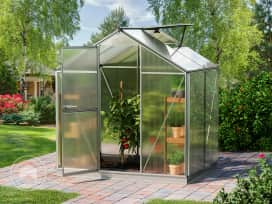
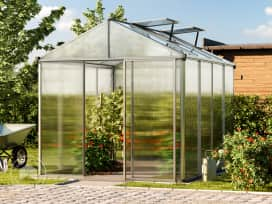

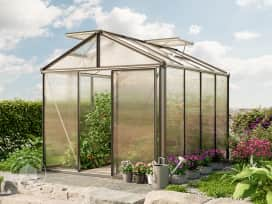
Our home-made tomato greenhouses from GFP are made of high performance and long-lasting materials. They combine a strong aluminium structure with robust twin-wall polycarbonate panels.
Thanks to their compact size, the tomato greenhouses fit into any garden. They can even be used as balcony greenhouses or mini greenhouses for other vegetables like peppers, cucumbers and aubergines.
A tomato greenhouse is perfect for planting tomatoes because it creates the ideal environment for tomatoes: it protects the plants from rain and weather. In addition, tomatoes in a greenhouse receive sufficient light and heat, two fundamental factors that promote growth. Since tomato plants grow to be quite tall, the tomato grow house must offer plenty of vertical space. The simple, functional and minimalist design of our products looks good on every balcony and in every garden.
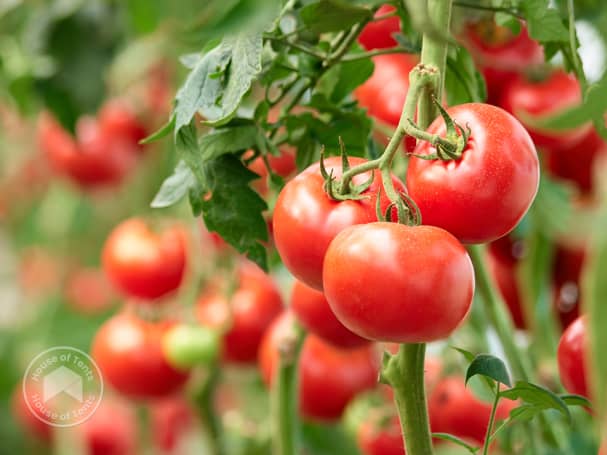
When placing seedlings, make sure there is enough distance between the tomato plants. Keep a distance of at least 50 cm between plants to provide sufficient sunlight and room for the seedlings to grow and ripen. If you plant several rows, keep a distance of 80-100 cm between the rows. Planting tomatoes in pots full of compost or in growbags is an easy way to care for greenhouse tomatoes.
Another disadvantage of planting tomatoes too close together is susceptibility to diseases. In particular, the Phytophtora infestans fungus (commonly called tomato blight) is notorious among tomato growers. With too many plants in a small area, diseases are more likely to develop. When watering the plants, only pour on the soil and not on the leaves or plants.
Tomatoes need a lot of heat and sunlight - they grow best in summer. The ideal conditions in a tomato greenhouse include a constant temperature of around 18 - 25 degrees, both day and night. This means regular ventilation during the day, while retaining heat at night. Regulating heat and sunlight is also an important factor for preventing splitting.
Although a tomato greenhouse protects against much of the unpredictability of the weather, you are always dependent on how warm or cold the start of spring is. If the start of spring is warm, plants can be planted in the greenhouse as early as late March or early April. However, you are then taking a risk as frosts can extend into April, especially in the North of England and Scotland.
It pays to research the last frost date for your region. Tomatoes will be ready to harvest in August. Ideally, seedlings should be prepared in nursery pots in your house, before the tomatoes are grown in the greenhouse.
For the tomato plants to grow well in height, they need to be supported to a bamboo stake or other support. When tying the tomato plants, be careful not to damage the plant. This is because if the plant is not tied correctly, there is a risk of the plant breaking. We recommend tying the plants with purely natural materials, such as a piece of hemp rope and a bamboo stick. These products can be found at any garden centre or hardware store.
The 1.07 m² EMMA mini tomato greenhouse takes up very little space and is an ideal size for a balcony. The Emma is a great option for the price conscious gardener, providing just enough room for a couple of tomato plants. Other small tomato greenhouses are available such as the ECO-STAR 2 (2.5 m²) and COMPACT 2 (2.7 m²).
If you have a little extra space, our models from 4.9 m² (VIOLA 2) to 7.3 m² (ISA 22) offer a nice covered area for growing tomatoes and other vegetables.
Our models have a height of between 193 cm and 232 cm, an important consideration for the proper growth of tomato plants.
Each tomato house has a door (sliding or hinged) and roof windows. Whether a mini greenhouse or walk-in greenhouse, these models are suitable for all locations: in the garden, on the terrace or on the balcony.
Growing tomato seedlings in a greenhouse has its advantages. Growing tomatoes at home is an ecological and economical trend that is becoming more and more popular. You no longer need to live in the countryside to grow tomatoes in a greenhouse! Mini or large tomato greenhouses can be installed in the garden, on the patio or on the balcony. A sturdy and durable growhouse is ideal for off-ground cultivation, for example in a raised garden bed. Plant your fruit and vegetables as you wish and enjoy good produce straight from your home, whatever the season.
The leaves and fruits of tomato plants are very sensitive to moisture and should be protected from rain. In the absence of a greenhouse or canopy, there is a risk of tomato seedlings contracting diseases such as downy mildew and other leaf infestations, which are favoured by the humid climate and cool temperatures. Our tomato greenhouses are 100 percent waterproof to prevent leaf diseases. A growhouse allows you to manage the irrigation of the plants and direct it to the soil, either by watering manually or by installing an irrigation system to maintain a constant level of moisture in the soil.
Note that planning permission is generally not required for a tomato house, but there are some exceptions. You can find out more in our planning permission guide.
Our weather-resistant tomato shelters are equipped with twin-wall polycarbonate panels with a number of features:
Polycarbonate is the perfect material to protect your tomato crop. Our models also have a door and roof window made of polycarbonate panels, available in thicknesses from 6 mm to 16 mm.
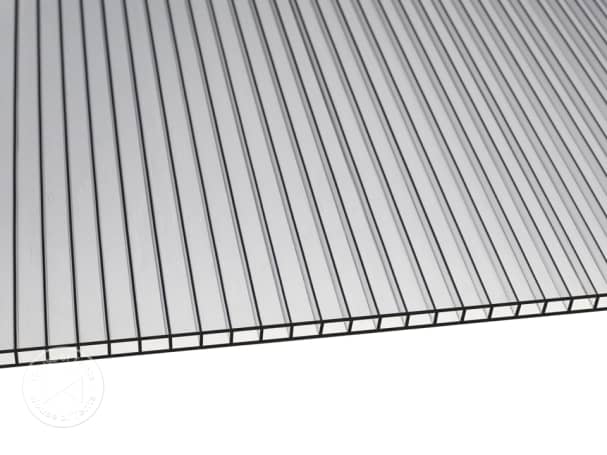
Our solid tomato greenhouses have an aluminium frame which is characterised by:
The polycarbonate tomato growhouse with an aluminium frame has two other advantages: it provides effective protection against stormy weather and is easy to maintain, compared to a wooden tomato shed. The latter requires regular maintenance and inspection. On the other hand, an aluminium greenhouse does not need to be painted or varnished.
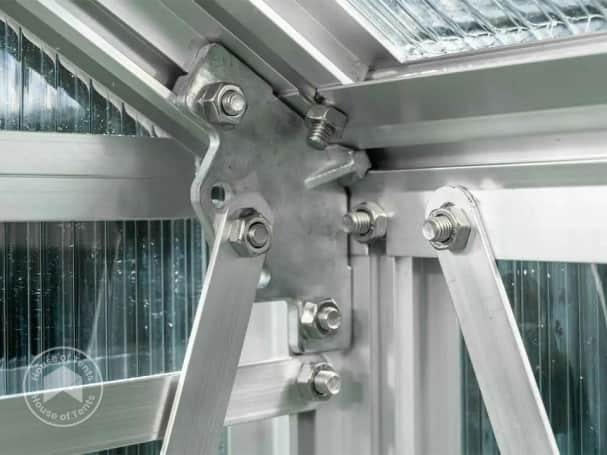
You will find detailed assembly instructions on the product pages alongside videos that demonstrate how to assemble a tomato grow house step-by-step. If you have any questions about our products, information about our offers and warranties, requests for spare parts or pre-purchase advice, our customer service is at your disposal and will be happy to assist you.
Expert advice
